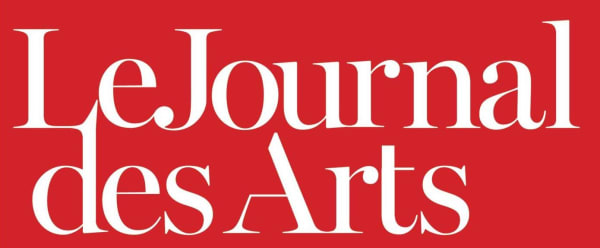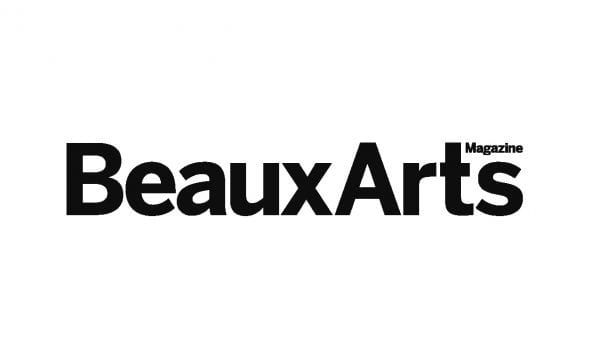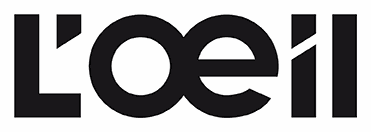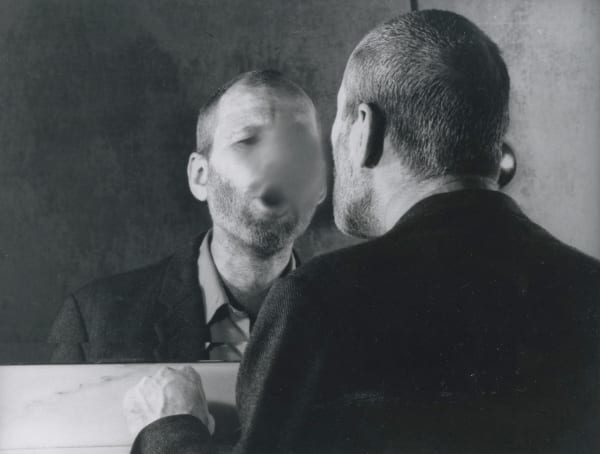I want to see art: Homage to Christian Bouqueret (1950 - 2013)
Françoise Morin and Les Douches la Galerie are pleased to invite you to the opening of the new collective exhibition, 'I want to see art', curated by Eric Rémy, on Thursday, November 30th, beginning at 6 p.m. This exhibition is a vibrant tribute to Christian Bouqueret (1950-2013), historian, gallery owner, and collector, who passed away ten years ago. It’s a rare opportunity to explore vintage prints from photographers, particularly those from the interwar period, which he passionately advocated during his lifetime. The exhibition also showcases the contemporary German photographic scene.
Opening on November 30 from 6 to 9 pm
-

Vente-hommage de défricheurs de la photo française
Le Journal des Arts, 2 February 2024 This link opens in a new tab. -

Collection Bouqueret : expérimental et beau
Beaux Arts Magazine, 26 January 2024 This link opens in a new tab. -

Christian Bouqueret aux douches de Paris, grand défricheur
L'Humanité, 8 January 2024 This link opens in a new tab. -

Je veux voir de l'art. Hommage à Christian Bouqueret (1950-2013)
Télérama Sortir, 3 January 2024 This link opens in a new tab.
-

L'actualité des galeries | Hommage à Christian Bouqueret
L'ŒIL Magazine, 1 January 2024 This link opens in a new tab. -

"Je veux voir de l'art" : la collection de Christian Bouqueret s'expose
Phototrend, 18 December 2023 This link opens in a new tab. -

Je veux voir de l'Art : Hommage à Christian Bouqueret à Les Douches la Galerie
Blind Magazine, 5 December 2023 -

I want to see art / Je veux voir de l'art Homage to Christian Bouqueret (1950-2013)
Photography now, 1 December 2023 This link opens in a new tab.
Five years ago, I discovered Les Douches la galerie, located two streets over from the flat where I had lived with Christian Bouqueret for thirteen years. The gallery’s director, Françoise Morin, was surprised by this random coincidence when I explained my connection to him, as she was in the very process of consulting the catalogues of the photographers Pierre Boucher, Jean Moral and René Zuber that Christian had written.
I took that as a sign pointing to a future collaboration to bring those photographs from the interwar period to light and thereby preserve the memory of his work.
Éric Rémy, Curator
As a young man drawn to the artistic avant-garde, Christian Bouqueret regularly visited the Musée d’art moderne de Paris and the galleries on the Boulevard Saint-Germain, especially those managed by Denise René. In 1973, while an active member of FAHR1, a romantic involvement led him to abandon his Chinese studies in Paris and head for Berlin where he studied art history and German. In the cosmopolitan city, where the wall still rose as a bulwark between two world views, he discovered the Bauhaus school that brought photography into the educational field of the arts.
During the same period, the representative journal Photographie (1930-1947)2 opened his eyes with an aesthetic shock. The journal became his primary source for learning about that very creative period when the influences of different artistic currents (constructivism, surrealism, new objectivity, etc.) enriched and influenced the diversity of the young photographers’ production (portraits, advertising, reportage, fashion, experimentation and so on).
When he returned to France in 1979, at the age of twenty-nine, Bouqueret briefly tried his hand at running a gallery. Too much of a trailblazer, or not experienced enough, he closed the place quickly. He next turned his attention to teaching in order to earn his daily bread, but photography remained his sole interest. In the early 80s, he met Michèle Chomette and together they put on a first exhibition, for the 1982 Rencontres d’Arles, on the work of the photographer and filmmaker Willy Zielke (1902-1989) whom he’d met while he was living in Berlin. In the years after, he continued to define the contours of the period’s rich photographic activity and contacted photographers who were still alive, or their heirs, in order to retrace their journeys and reconstruct the photographic activity of the interwar period. Among them: Ilse Bing, Jean Moral, Pierre Boucher, Carlo Rim, Dora Maar, Pierre Jamet, François Tuefferd, Pierre Ichac, Génia Rubin, Mme Roger Parry, Mme François Kollar, Mme Eméric Feher, Mme Bajolet/Steiner.
From the mid-80s through 2004 he put on some twenty exhibitions, with support from museums and their curators, in particular François Cheval, Jean-luc Monterosso and Gérard Guillot-Chêne. In 1987, while working on the photography section of the exhibition Les année 50 [The 50s] at the Centre Pompidou, Bouqueret discovered Roger Catherineau’s work on ‘photographism’. Catherineau was a forgotten artist who passed away in 1962 at the age of thirty-nine. His photographs appeared in the great exhibitions Subjektiv fotografie I & II (1952, 1955), which were organised by the German photographer Otto Steiner, alongside another master of French photography, the critic, theoretician and photographer Daniel Masclet. Bouqueret then began working on raising funds for the experimental photography of the 1950s in Europe, envisioning a large exhibition that never came to fruition.
In 1990, he and Marie-Claude Lebon created the gallery Bouqueret+Lebon which they devoted to rediscovering French photographers of the interwar period, presenting the contemporary German photography scene (Kurt Buchwald, les Blume, Dieter Appelt, Gerd Bonfert, Jürgen Klauke, Dörte Eissfelt), and photographers working in France (Tom Drahos, Marc Donnadieu ou Thierry Balanger). In 1996, he quit working at the gallery, devoting himself instead to writing his book Des années folles aux années noires, la nouvelle vision photographique en France 1920-1940 [From the Roaring Twenties to the Dark Years: The New Vision for Photography in France 1920-1940], the fruit of fifteen years of study of that watershed period in the history of art, and which would be awarded the Prix Nadar in 1997. While his work as a historian pushed him to study the different fields of photography (reportage, fashion, advertising, portraits, etc.), his aesthetic attraction led him toward experimentation, artistic research where photography becomes autonomous and breaks free of its primary function of reproducing the real.
Photography should be looked at for what it is and not for what it represents, like Willy Zielke’s glass plates and the way he plays with transparency, Germaine Krull’s ‘Iron Works’, André Steiner’s architecture of bodies and Anneliese Hager (1904-1997)’s photogrammes. The photographers he was most personally interested in treated the photographic medium as a material, expanding its possibilities. For instance, the work of Raoul Ubac – certainly the photographer with the most experimental approach to image-making – or the experimental works of the German Heinz Hajek-Halke, whom he discovered in the late 70s.
Brutally prevented from continuing his work by illness in 2004, Bouqueret remained active and suggested the Jeu de Paume put on an exhibition of photographs from the 1930s in France. Marta Gili, the director at the time, wanted to reveal the other side of his relationship with photography so a part of his collection was shown at the Hôtel de Sully in 2008: Paris Capitale photographique 1920-1940, collection Christian Bouqueret [Paris, the Capital of Photography, 1920-1940: The Christian Bouqueret Collection]. In 2009, at the instigation of Quentin Bajac, the curator of MNAM/Centre Pompidou at the time, his collection was classed as a work of major national interest and was subsumed into the MNAM’s collection thanks to the patronage of the Yves Rocher Group. In November 2012, the exhibition Voici Paris - Modernités photographiques, 1920-1950 [This is Paris – Photographs in Modernity, 1920-1950], curated by Quentin Bajac et Clément Chéroux, highlighted the richness and diversity of the historian Bouqueret’s collection, reflecting the bountiful activity and photographic creativity of the interwar period in France.
On the morning of 17th November 2013, terribly weakened by illness and in response to my urging that he take rest rather than return to Paris Photo one last time, Christian replied with a burst of energy: ‘I want to see art’.
Christian Bouqueret passed away on 5th December 2013. For forty years, photography had been his passion.
¹ Front homosexuel d’action révolutionnaire [The Homosexual Front for Revolutionary Action], formed in 1971.
² This review was launched in 1930 as a first supplement to the monthly , offering a panorama of that year’s photographic production. The radical layout decision to print full-page photos, reproduced in photogravure, was so successful that it was decided to keep producing the review. Until 1940, one volume was published almost every year, with the last appearing in 1947.

![Thomas Florschuetz, Ohne Titel (KHS) [Sans titre (KHS)], 1989](https://artlogic-res.cloudinary.com/w_600,c_limit,f_auto,fl_lossy,q_auto/artlogicstorage/lesdoucheslagalerie/images/view/250f779b613a7b7ad420cd05969a8f4e/lesdoucheslagalerie-thomas-florschuetz-ohne-titel-khs-sans-titre-khs-1989.jpg)

















